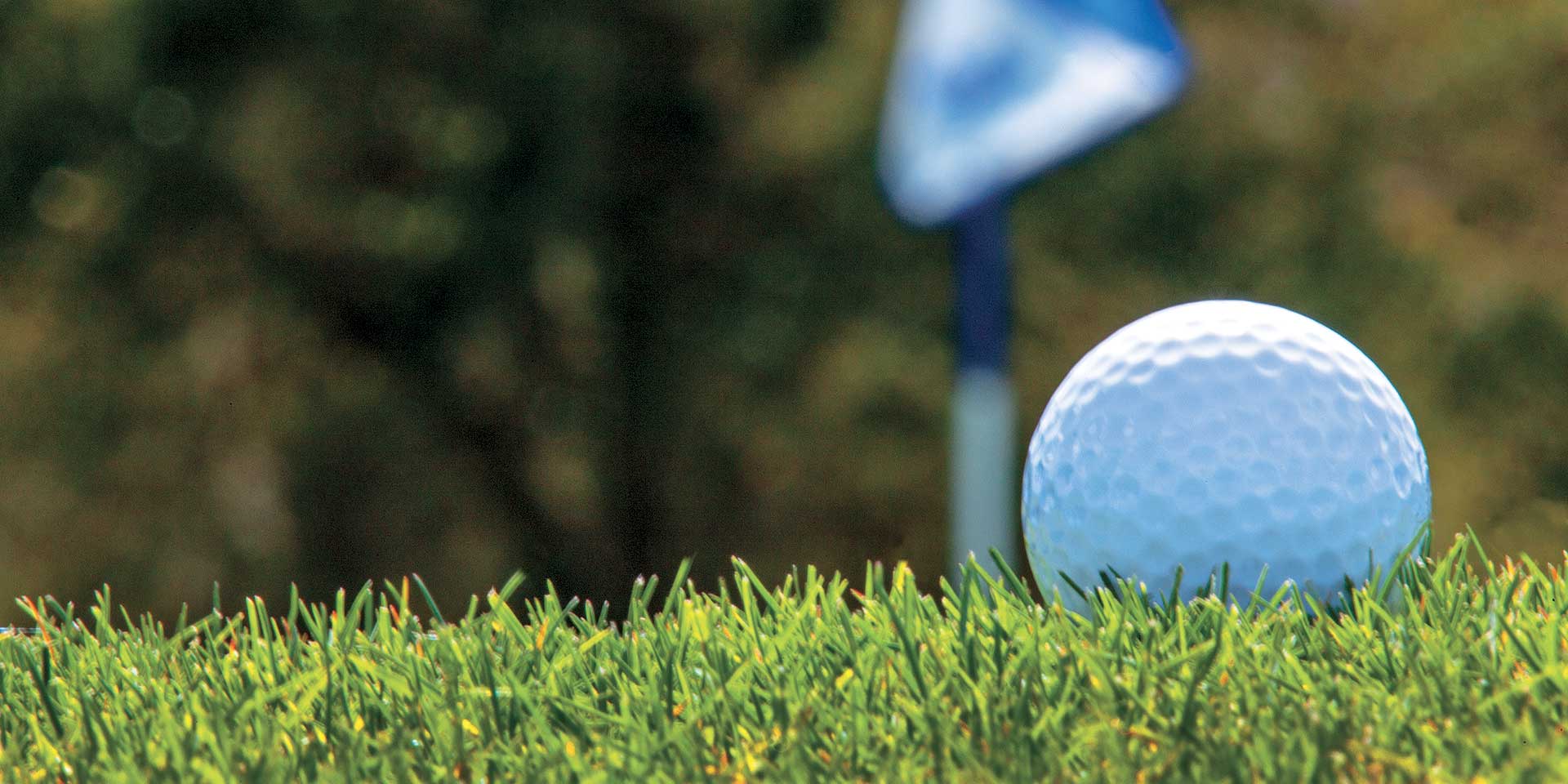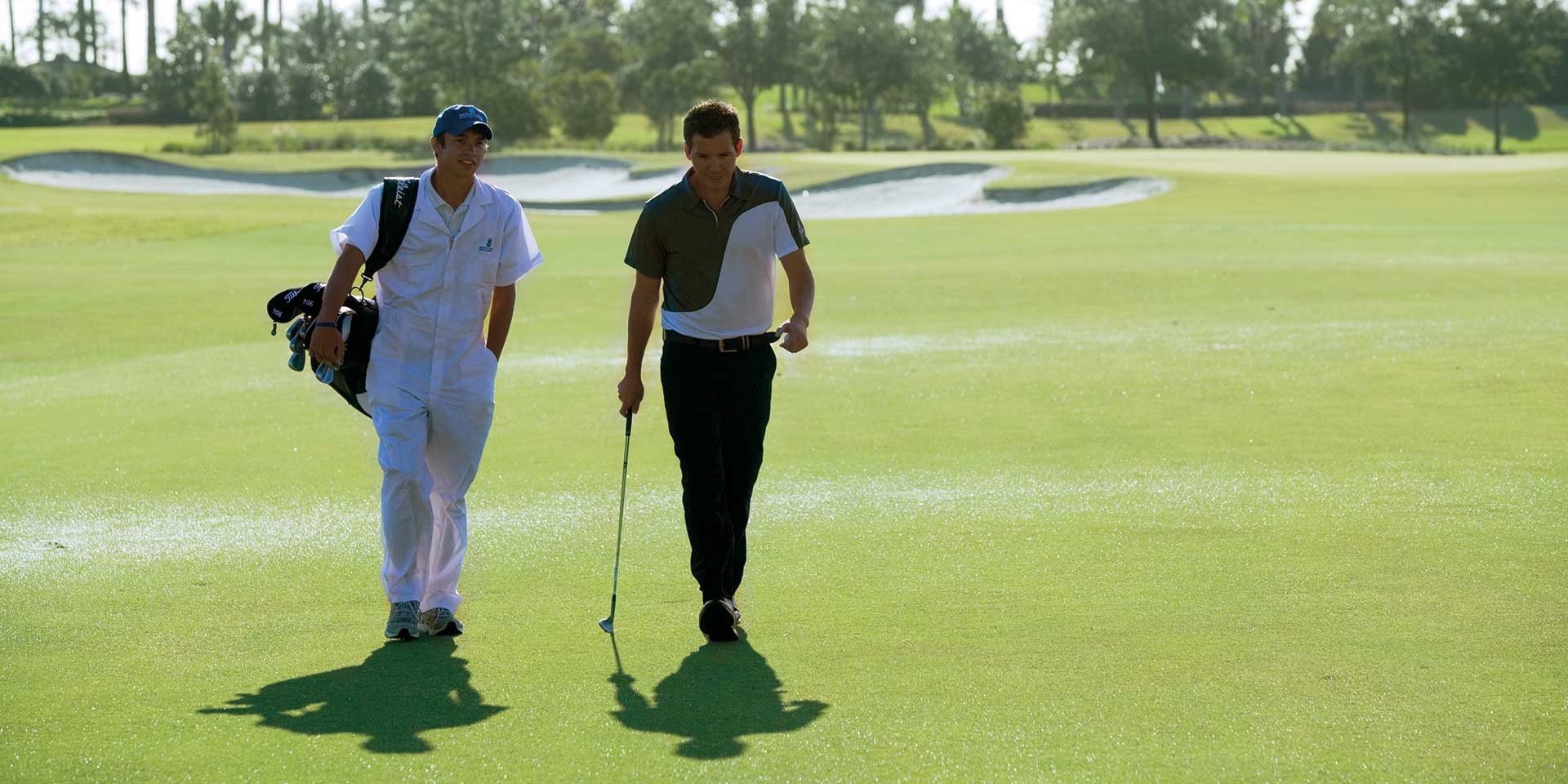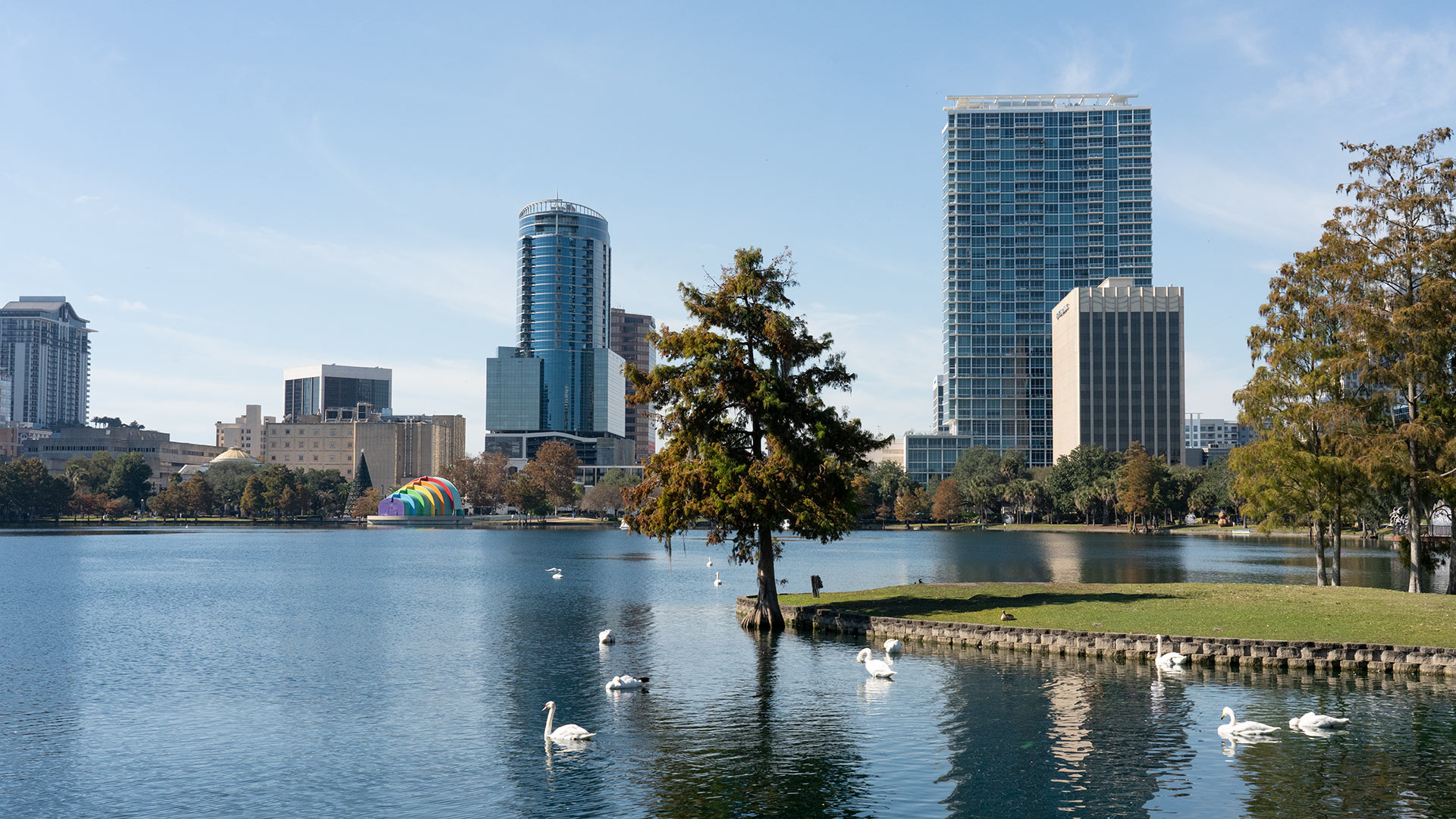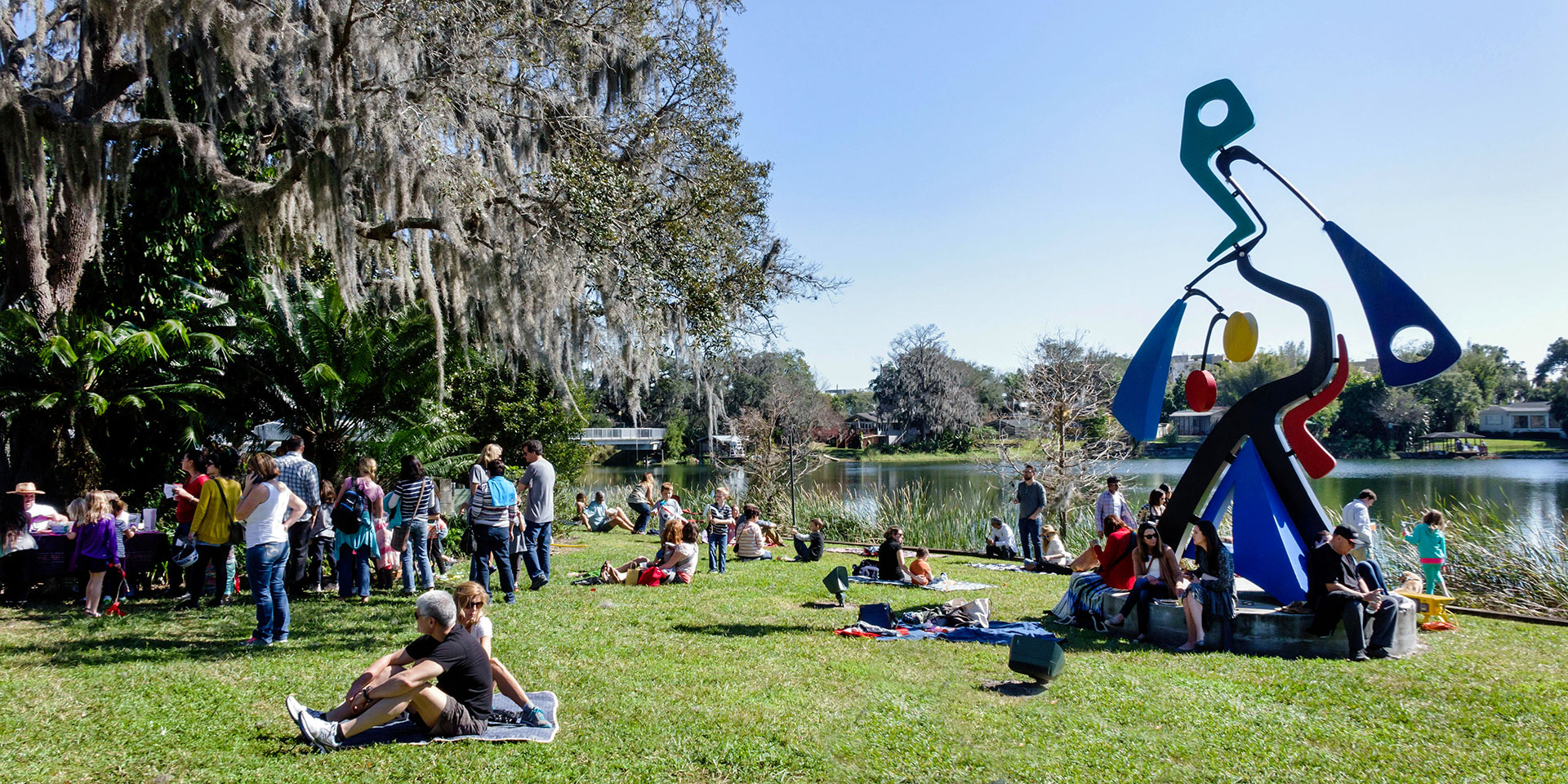
Hit the greens at The Ritz-Carlton, Orlando, Grand Lakes. (Photo: Marriott International)
Health + FitnessGolf Tips from the Pros: Perfect Your Game with These Secrets from Florida’s Golf Insiders
By Terry WardIt’s common knowledge that Florida is like no place on Earth. That applies to playing golf in the Sunshine State, too, where skies that stay clear most of the year and balmy temps make it possible to tee off year-round. That said, understanding how to handle Florida’s unique greens and playing conditions is key, and being privy to a few inside tricks is essential for perfecting your game.
Marriott Bonvoy Traveler chatted with Steve Ousley, Director of Club Membership for The Ritz-Carlton Orlando, Grande Lakes, and Kevin Kremer, the property’s Director of Golf. The property is home to a sprawling, championship-level course designed by two-time British Open champion, Greg Norman.
Both Kevin and Steve are avid Florida golfers, originally from up north, who have sharp insights to share about teeing off at sea level and under the sun in Florida.
As always, check for travel restrictions and closures before planning your trip.
Golfers tee off in Florida year-round, but is there a peak season?
Kevin: There’s not a limited seasonal time frame for play like you have, say, in the Northeast. We play in the summer months, for sure, but golfers adapt their tee times to the pattern of afternoon showers and lightning storms that can dominate, particularly in August.
It can be a little more hindering to play a quick nine after work in the summer due to the unpredictability of the weather. So, many people will book a morning tee time because it’s cooler and you’re not dodging rain.
At our course, 7 a.m. is the earliest tee time year-round, but there are other facilities around the state that open at dawn so you can get out and play as soon as the sun comes up.

Steve: October through May, when courses shut down up north, are peak season for us. But January, February and March are when you find the best golf conditions here; it’s as good as it gets. It can get cool once in a while, but conditions are ideal for playing.
What advice do you have for golfers who are new to playing in Florida?
Kevin: Expect lots of water and sand. We have a ton of lakes in Central Florida, in particular. The state is fairly flat. There are some areas with plateaus where you can get some terrain, but those areas are fairly limited. And most of the public and private facilities are going to be fairly flat.
Designers combat that kind of setup with directional holes, dog legs and trees that make it harder to get around — and therefore more challenging and fun. Adding bunkers and hazard items and transplanting trees is another tactic, too. So don’t assume that Florida’s flat terrain means an open field where you just swing as hard as you can.
Steve: One of the things that the traveling golfer needs to adjust to in Florida is the fact we are at sea level, so the ball doesn’t fly as far as it might in, say, Colorado.
We have a unique type of dominant grass that grows in Florida, called Bermuda. It’s a little more of a wiry grass, especially from April to November when it’s in its growth stage. You have to play the golf ball more in the air than on the ground, as you might up north.
You have to fly the ball more as opposed to bouncing it. It’s definitely a different kind of game. The ball tends to sit closer to the ground in Bermuda grass, too, so you have to use a more aggressive swing since it’s a trickier grass to chip out of.

Kevin: I usually advise people who are new to golfing in Florida to spend some time around the greens practicing to feel the difference in hitting your shots. It’s more difficult.
The ball doesn’t fly as well as anywhere above sea level, so you have to hit to the spot you want to end up and try to carry the ball all the way to the hole because it tends to stop quicker on Florida greens. That’s especially true during the summer months. The greens here are not usually firm and fast. Florida golfing is a little wetter and a little slower.
Anything to know about Florida wildlife?
Steve: Our course is within a Certified Audubon Cooperative Sanctuary, and we have bobcats and lots of bird species, as well as gopher tortoises in protected areas, too. Florida is known for its many bird species, as well as other wildlife.
How should golfers dress for Florida’s hot summers and mild winters?
Kevin: Sun protection is a must year-round; we have sunscreen in our lockers and restrooms. But when it comes to what to wear, it’s a personal preference.
During the winter months, we recommend golfers have the flexibility to take off or put on a light jacket. Still stick with wearing shorts during that time, but have a sweater or cover piece to throw over your golf shirt for those early mornings or late-afternoon play, when the sun starts to go down.
Something we have seen take off lately for sun protection is “sun sleeves.” They are kind of an extension of a shirt that go from just past your elbow to your wrist. They work almost as a coolant; as you sweat, they keep you cooler, and they also keep your forearms protected from the sun — with the bonus of not having to lather on more sunscreen every few minutes.

Steve: Florida is a big state with different weather as you move from north to south. There’s kind of a line in Florida that separates Orlando and points south — where the weather is between the 60s up to averages of around 80 from January through March — from the more cool areas north in Jacksonville and the Panhandle.
[Another] clothing trend that’s become almost a given now, no matter the weather, is the transformation from the cotton golf shirt of yesteryear to performance wear. The polyester shirt has come so far over the last few years with its moisture-wicking properties.
It’s probably a necessity in the state of Florida. Even golfers who skew more traditional are now wearing it. The material is also easy to pack and doesn’t wrinkle.
It rains a lot in Florida during the summer. Any tips or gear essentials for golfing through the drizzle?
Steve: Living here, we say we don’t play in the rain because we know tomorrow is probably going to be sunny again. That’s Florida for you. But as long as there’s not lightning in the area, you can certainly play through the rain.
Kevin: I highly recommend having an umbrella in your bag, and a rain jacket and a club cover is never a bad thing, either. Rain gloves are also a good idea — they’re golf gloves that are more conducive for use in the rain. Be aware that in Florida, showers can pop up quickly.
If you like playing through those conditions, rain gloves really help because they actually work better when they’re wet. They get a tacky feel, and they’re designed to be stickier and grab the club a lot better when wet. A regular golf glove that’s leather or fake leather, on the other hand, will most likely just get slick when wet.






